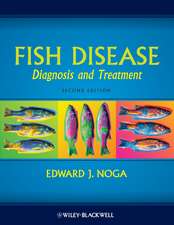Chloride Channels and Carriers in Nerve, Muscle, and Glial Cells
Editat de F.J. Alvarez-Leefmans, John M. Russellen Limba Engleză Hardback – 30 mai 1990
| Toate formatele și edițiile | Preț | Express |
|---|---|---|
| Paperback (1) | 1228.96 lei 6-8 săpt. | |
| Springer Us – 26 apr 2013 | 1228.96 lei 6-8 săpt. | |
| Hardback (1) | 1236.69 lei 6-8 săpt. | |
| Springer Us – 30 mai 1990 | 1236.69 lei 6-8 săpt. |
Preț: 1236.69 lei
Preț vechi: 1508.16 lei
-18% Nou
Puncte Express: 1855
Preț estimativ în valută:
236.67€ • 244.49$ • 196.97£
236.67€ • 244.49$ • 196.97£
Carte tipărită la comandă
Livrare economică 26 martie-09 aprilie
Preluare comenzi: 021 569.72.76
Specificații
ISBN-13: 9780306434266
ISBN-10: 0306434261
Pagini: 426
Ilustrații: XVIII, 426 p.
Dimensiuni: 178 x 254 x 25 mm
Greutate: 0.99 kg
Ediția:1990
Editura: Springer Us
Colecția Springer
Locul publicării:New York, NY, United States
ISBN-10: 0306434261
Pagini: 426
Ilustrații: XVIII, 426 p.
Dimensiuni: 178 x 254 x 25 mm
Greutate: 0.99 kg
Ediția:1990
Editura: Springer Us
Colecția Springer
Locul publicării:New York, NY, United States
Public țintă
ResearchDescriere
This is a book about how Cl- crosses the cell membranes of nerve, muscle, and glial cells. Not so very many years ago, a pamphlet rather than book might have resulted from such an endeavor! One might ask why Cl-, the most abundant biological anion, attracted so little attention from investigators. The main reason was that the prevailing paradigm for cellular ion homeostasis in the 1950s and 1960s assigned Cl- a ther modynamically passive and unspecialized role. This view was particularly prominent among muscle and neuroscience investigators. In searching for reasons for such a negative (no pun intended) viewpoint, it seems to us that it stemmed from two key experimental observations. First, work on frog skeletal muscle showed that Cl- was passively distributed between the cytoplasm and the extracellular fluid. Second, work on Cl- transport in red blood cells confirmed that the Cl- transmembrane distribution was thermodynamically passive and, in addition, showed that Cl- crossed the mem brane extremely rapidly. This latter finding [for a long time interpreted as being the result of a high passive chloride electrical permeability(? CI)] made it quite likely that Cl- would remain at thermodynamic equilibrium. These two observations were gener alized and virtually all cells were thought to have a very high P Cl and a ther modynamically passive Cl- transmembrane distribution. These concepts can still be found in some physiology and neuroscience textbooks.
Cuprins
1. Methods for Measuring Chloride Transport across Nerve, Muscle, and Glial Cells.- 2. Principles of Cell Volume Regulation: Ion Flux Pathways and the Roles of Anions.- 3. Chloride Transport in the Squid Giant Axon.- 4. Intracellular Cl? Regulation and Synaptic Inhibition in Vertebrate and Invertebrate Neurons.- 5. Chloride Transport across Glial Membranes.- 6. Chloride Channels and Carriers in Cultured Glial Cells.- 7. Chloride Transport across the Sarcolemma of Vertebrate Smooth and Skeletal Muscle.- 8. Biophysical Aspects of GABA- and Glycine-Gated Cl? Channels in Mouse Cultured Spinal Neurons.- 9. GABA-Gated Cl? Currents and Their Regulation by Intracellular Free Ca2+.- 10. Pharmacology and Physiology of Cl? Conductances Activated by GABA in Cultured Mammalian Central Neurons.- 11. Acetylcholine-Activated Cl? Channels in Molluscan Nerve Cells.- 12. GABA-Activated Bicarbonate Conductance: Influence on EGABA and on Postsynaptic pH Regulation.- 13. Calcium-Dependent Chloride Currents in Vertebrate Central Neurons.- 14. Hyperpolarization-Activated Chloride Channels in Aplysia Neurons.- 15. The Voltage-Dependent Chloride Channel of Torpedo Electroplax: Intimations of Molecular Structure from Quirks of Single-Channel Function.- 16. Chloride Channels in Skeletal Muscle.






